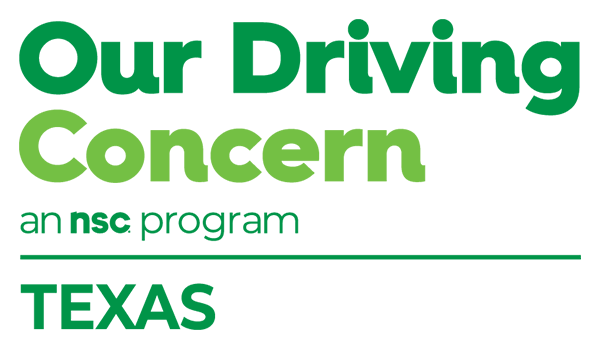Mythbusters
Distracted driving is all too common and deadly. Distracted Driving Awareness Month is a perfect opportunity to educate employees on safe driving behaviors. One of the best ways to participate is to dispel myths about distracted driving. Discuss the following three common myths with employees to encourage them to be safer on the roads:
- Talking on a hands-free device is safe. It’s better than talking on a hand-held device behind the wheel, right?
Wrong. Drivers talking on hands-free and handheld phones can miss seeing up to 50% of what is in their driving environment, including stop signs, red lights and pedestrians. Using a hands-free device behind the wheel can lead to cognitive distraction. Driving and talking on a phone are both thinking tasks. The human brain cannot handle two thinking tasks at the same time. Rather, your brain toggles quickly back and forth between tasks. This can slow reaction time and lead to crashes.
2. Talking on the phone while driving is no different than talking to a passenger, right?
Wrong. An adult passenger serves as co-pilot. He or she will watch for street signs and landmarks, spot potential hazards and alert the driver. He or she also will relate to the challenge of driving in inclement weather or heavy congestion and stop talking so the driver can focus on the road. The person on the other end of a phone conversation is not going to be able to act as a co-pilot because he/she does not share the same field of vision. Likewise, a teen is not always going to act as a reliable co-pilot because a teen often lacks the maturity and driving experience to put safety first.
3. It is safe to use the technology built in to today’s vehicles, right?
Wrong. Technology can be your friend, but when you are behind the wheel, technology can be distracting. Your eyes are not on the road, your hands are not on the wheel and your mind is not on driving when you’re using touchscreens, apps, voice command controls or programming your GPS. These items come standard because consumers often are looking for convenience first, not safety. You are your car’s best safety feature. You cannot abdicate that responsibility to technology. You need to silence your phone, program your GPS and pick a radio station before you depart. The choice is always yours. Ask yourself: Is it safe to use technology? Is it a wise choice? Would you advise family members or relatives to behave this way?
Here are four more ways to ramp up your driver safety efforts during Distracted Driving Awareness Month:
- Lead a Safety Talk: Use our Distracted Driving Safety Huddle sheet as a guide
- Poster-ize Safety: Print and display distracted driving posters from our online poster gallery
- Go Live with Lisa: Share a link to one of my traffic safety videos in a company newsletter or on your intranet site: Select the Toggle Switch for Safety
- Just Drive: Get free resources from the National Safety Council
On a typical day in the U.S., more than 700 people are injured in distracted driving crashes. Be part of the safety solution.
Return on Investment
Good drivers are good for business.
All of us working in the Our Driving Concern Texas Employer Traffic Safety program are in the business of road safety. We work with employers every day to help them control costs, which means encouraging safe driving behaviors that drive down costs for the employer.
Download our report for details on lives saved and dollars saved by Texas employers who have tapped into the Our Driving Concern program and prioritized driver and transportation safety.
A newly updated report from the Network of Employers for Traffic Safety details how much U.S. employers spent on crash costs in 2019 — $72.24 billion. I checked: You easily could buy a private jet, luxury yacht or modest skyscraper for $1 billion. So, yes, that’s a lot of money. Breaking it down, NETS findings show employers spent:
- $39.02 billion for on-the-job crashes
- $33.22 billion for off-the-job crashes
The calculable costs of crashes include wage and productivity losses, medical expenses, administrative expenses, and motor vehicle and property damage expenses. What is incalculable: the physical and mental anguish linked to injuries and fatalities as a result of crashes.
More than half of U.S. employer crash costs can be linked to four driver behaviors, according to the NETS report:
- Distracted driving – $18.8 billion
- Speeding – $9.8 billion
- Alcohol-impairment – $8 billion
- Not wearing a seat belt – $7.4 billion
How much are you spending on crashes at your location? NETS has developed a Cost of Crashes Calculator to help you measure your company’s collision costs. Use the tool and present the information you gather in your next meeting with executives to highlight the importance of investing in road safety.
Think of investing in road safety as investing in your bottom line. Let us help you build a best-in-class driver and transportation safety program – and at no cost. All of our training and resources are free. Visit our website: txdrivingconcern.org or email me to set up a time to talk: [email protected].


